Garden help! Should I put a path around raised garden beds?
batgirl548
4 years ago
Featured Answer
Sort by:Oldest
Comments (21)
Related Discussions
Need help planning raised bed lasagne garden
Comments (3)Hey Sandra, First an foremost, i feel for you, I was in your same shoes, just moved in my house a few years ago.. It's tough and very mind tiring, but hang in there, the fruits of your labor is well worth it.. Just teaching the kiddos, and spending time with them is priceless! You mentioned no till lasanga gardening.. I do no till and It works very very well! Some will tell you it's hogwash, and every situation calls for offstage measures, which is true, but you can almost always do a small garden no till without to many problems.. I think your off to a good start right there my friend! Don't worry about not planning ahead to much, you still have a few weeks to plan.. You can almost plan to much! Trust me, I'm a perfectionist and I get so carried away in plant spacing for maximum yield,etc, i let the whole growing season go by.. It's better off just putting plants in and learning as it progresses, instead of not growing anything at all.. Your concerned about cross pollination.. I assume your growing heirlooms and trying to save seed.. You really don't have to much to worry about for cross pollination.. Just bag the flowers before they open to ensure isolation of pollen... I do something very similar tonkasanga gardening, but I don't actually layer it up to compost, I actually unfinished compost, then just some mulch.. Here's what I do, -cardboard the grass -pile compost/soil on the cardboard -mulch -plant Don't get to overwhelmed, worst comes timeless just throw some seeds down, any gardens better than none! Please, take it easy, you probably got enough work with the new house.. Don't worry to much... Gardening should be a fun hobby, not a chore. Joe...See MoreRaised Garden Bed Help
Comments (5)You will find something over 146,000 posts about raised beds on Garden Web. Depth. Plants need a soil depth of about 6 to 8 inches for root growth, so 20 inches will be more than ample. Some carrot varieties might need a little more depth then that 6 to 8 inches but most all vegetables will do fine with that depth. Base soil. There is no real reason to do anything with the soil under the raised bed unless you have some invasive "weeds" there. The depth of the soil in the raised beds will smother any growth that is there now. You would not even need cardboard or newspaper to put down on that soil. You might consider removing what is in the front yard although with raised beds with a 30 inch depth even that would not be necessary. Material. There is a lot of misunderstanding about Pressure Treated wood in the garden, as well as heavy metals in soil. The old CCA PT wood was removed from the market because Arsenic could leach from that wood and children could get that Arsenic on their hands as thy played on structures made from that wood and then could ingest that Arsenic. Plants uptake small amounts of Arsenic normally apparently as part of their natural insect protection. Very few plants uptake heavy metals from soils and the most common way people are exposed to heavy metals is when they work the soil. Heavy metals do not move about in soils very well....See MoreHelp with planting raised Garden Beds? Primarily tomatoes..
Comments (28)Fordido, yes I prune the lower branches and as the season goes on I am pruning a lot of the lateral branches (non fruit producing) in the center of the plant for better air circulation. I think with a toddler you are much better off with just six per bed. When I babysit my grandsons there is no way I could keep up with the pruning, spraying and the close attention needed for more dense planting and those two boys! Jennie...See MoreNeed help for Raised Garden Bed - Gate?
Comments (12)Certainly there is nothing wrong with a small garden. I don't have any experience with a hoop house and for spraying water thru a fence? First spraying water can lead to other problems esp. mildews etc. from getting the leaves wet. Lifting or accessing a hoop house I think will be more troubles than it is worth for long season crops. I am for moving the fence farther away from the bed frame but I prefer at least 4 ft. Some feel they can make do with less - so kneel down and work the bed to see just how much room you will need then add a foot as it will get crowded fast.. Do you compost or will you? I have recently moved my compost pile into my garden area 1.) to make it easier, and 2.) soil any worms or composted minerals, etc. are in the soil where I am actively growing plants. Keep a mulched area at least 4ft away from your bed frame as the roots from your plants will travel well beyond the bed frame and will not have to compete with grass or other weeds for water and other minerals. For other ways to keep deer away - have you considered a dog? If you still need a gate I am willing to bet that Home Depot or Lowes will have something....See Morebatgirl548
4 years agoSonja Thompson
4 years agobatgirl548
4 years agoSonja Thompson
4 years agobatgirl548
4 years agospeakeasy
4 years agoP.S. Interiors
2 years agoRadu Minulescu
last yearPaul Sirus
last yearlast modified: last yearpartim
last yearuser525
12 months ago
Related Stories
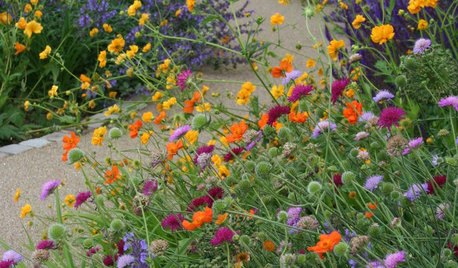
PLANTING IDEAS3 Color Palettes to Help Set Your Garden’s Mood
Select plants in these color combinations to create an outdoor space that’s cheerful, energizing or calming
Full Story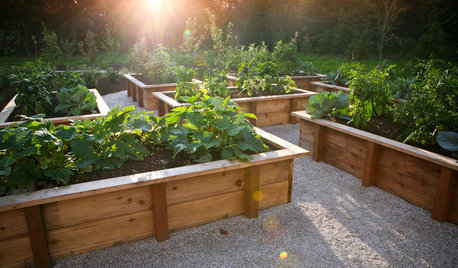
GARDENING AND LANDSCAPINGRaised Beds Lift Any Garden
From good old-fashioned wood garden boxes to modern metal troughs, raised beds can make any landscape space look great
Full Story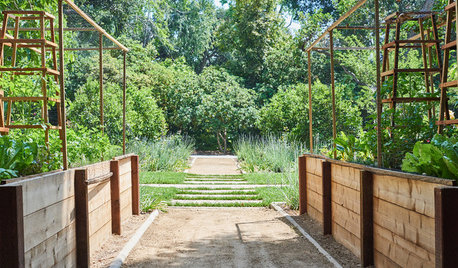
EDIBLE GARDENS7 Tips to Ensure Success With Raised Bed Gardening
Raised bed gardening is a favorite for edible plants. Here’s how to get it right
Full Story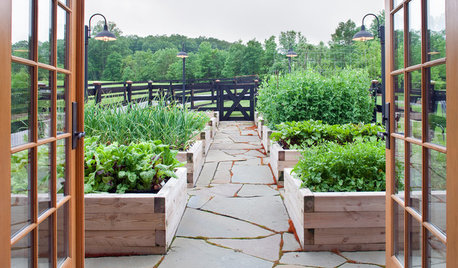
FARM YOUR YARDRaised Beds for Every Garden Style
There’s a raised bed design for every landscape, from traditional to contemporary
Full Story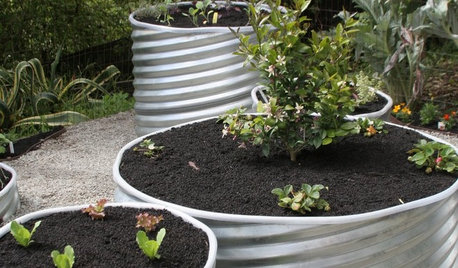
GARDENING GUIDES8 Materials for Raised Garden Beds
Get the dirt on classic and new options for raised vegetable and plant beds, to get the most from your year-round garden
Full Story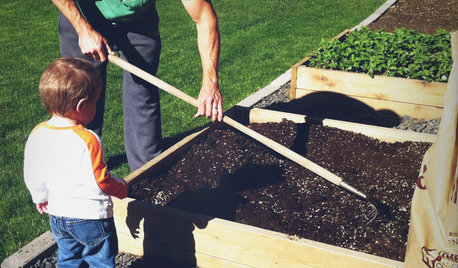
GARDENING AND LANDSCAPINGBuild a Raised Bed to Elevate Your Garden
A bounty of homegrown vegetables is easier than you think with a DIY raised garden bed to house just the right mix of soils
Full Story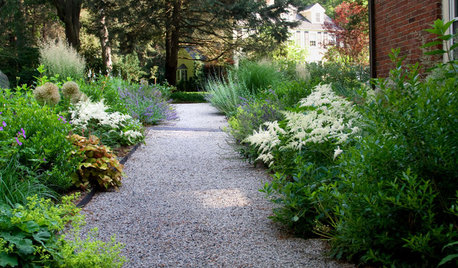
LANDSCAPE DESIGN10 Ways to Put Gravel to Work in Your Garden
Use gravel for pathways and patios, as a mulch for garden beds, to reduce rainwater runoff and more
Full Story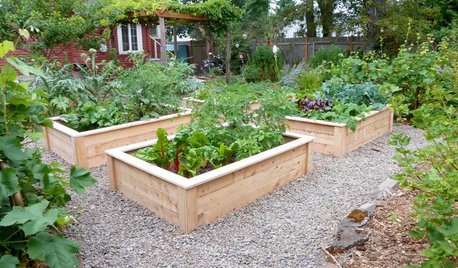
GARDENING GUIDES12 Tips to Help You Start an Edible Garden
Get on your way to growing your own vegetables with a raised bed or a few containers on the patio
Full Story
REGIONAL GARDEN GUIDESCalifornia Gardener’s February Checklist
With spring just around the corner, here are 9 ideas for getting a head start on the season
Full Story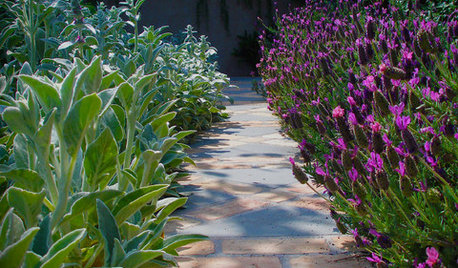
LANDSCAPE DESIGNThe Garden Edge: Rethink Your Garden Pathways
The right plant choices not only frame your paths with distinction, but they also take you on a journey of the senses
Full Story








localeater